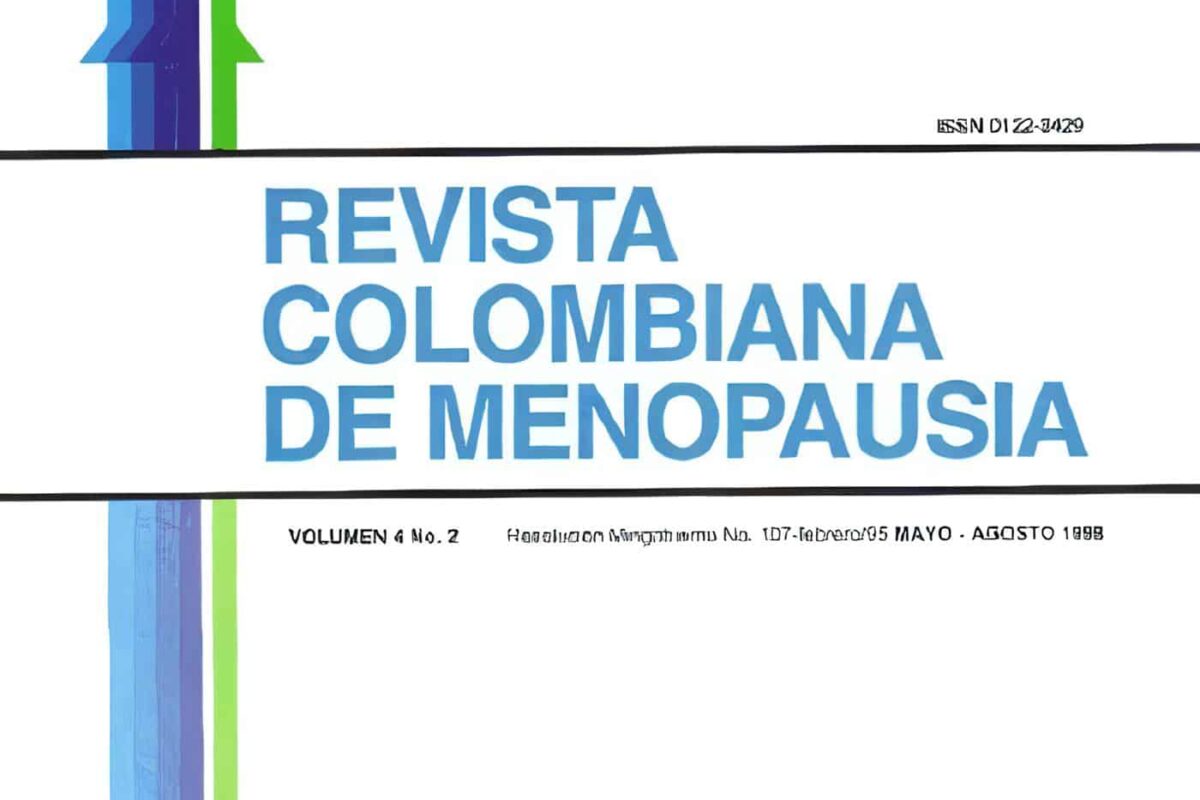La perspectiva a largo plazo para la farmacología crónica en el estado postmenopáusico parece prometedora. Los estudios clínicos aleatorizados que se están realizando nos proporcionarán una mayor comprensión de los beneficios y desventajas de la TRH crónica a lo largo de los próximos 5 a 10 años. Es factible que los índices globales de prescripción y cumplimiento al tratamiento mejoren, dependiendo de los resultados de estos estudios, ya que tanto la paciente como el médico entenderán mejor la relación entre riesgo y beneficio de la TRH.
No obstante, existe la posibilidad de que la relación entre riesgo y beneficio para la TRH, como se está estudiando en el Women’s Health Initiative (terapia combinada continua), no sea la adecuada para justificar su uso difundido en mujeres postmenopáusicas con útero intacto.
Esta posibilidad ha impulsado la búsqueda de estrógenos mejorados que eliminen la necesidad de la inclusión de progestinas durante la terapia estrogénica.
Una novedosa clase de compuestos descritos aquí, los MSRE, parece representar una promesa en este sentido.
Las alternativas para el uso de estrógenos no selectivos tradicionales en la terapia postmenopáusica se han convertido en una posibilidad real, y el raloxifeno es el primer ejemplo de un MSRE que manifiesta la selectividad apropiada por el hueso y el metabolismo del colesterol frente al útero en extensos estudios preclínicos y clínicos iniciales.
No obstante, falta contestar importantes interrogantes antes de que los MSRE:
Se consideren como una alternativa viable para la TRH o la TRE. Ante todo será preciso establecer su eficacia clínica con respecto a la conservación del hueso y a la enfermedad cardiovascular.
Como el estudio clínico de eventos cardiovasculares requiere trabajos prolongados, y como no está claro qué mecanismo(s) preciso(s) explica(n) el beneficio cardiovascular (“cardioprotección”) del estrógeno, también resultarán de gran importancia los datos iniciales en relación con los efectos de los fármacos sobre los factores de riesgo cardiovascular y la aterosclerosis subclínica.
También es necesario analizar la eficacia con respecto al alivio de los síntomas perimenopáusicos, tales como la inestabilidad vasomotora.
Además de la demostración de la eficacia, será importante realizar estudios de seguridad a largo plazo, particularmente con respecto al tejido uterino, para establecer una mejoría en la relación entre riesgo y beneficio en la terapia estrogénica.
Así pues, quedan por realizar extensos estudios clínicos con el objeto de determinar si algún miembro de la clase de los MSRE va a manifestar un perfil clínico global que se aproxime al estrógeno ideal para la prevención y tratamiento de las complicaciones postmenopáusicas en las mujeres.
Casi todos los estudios clínicos mencionados implican un marco de tiempo crónico (entre 3 y 10 años), extensos grupos de pacientes e importantes inversiones financieras.
En consecuencia, se requieren proporciones sustanciales de recursos y un riesgo financiero significativo para el desarrollo de un estrógeno mejorado como lo sería un MSRE.
No obstante, dada la importancia de la condición postmenopáusica como factor de riesgo que afecta a la salud de la mujer, además de los inconvenientes conocidos y potenciales de la terapia existente, la balanza se inclina de manera tal que nos indica que debemos proceder de manera expedita a satisfacer esta importante necesidad médica.
Bibliografía
- 1. Kannel WB, Hjortland MC, McNamara PM, Gordon T. Menopause and the risk of cardiovascular disease: The Framingham study. Ann Intern Med 1976; 85: 447-452.
- 2. Parrish HM, Carr LA, Hall DG y Cols. Time interval from castration in premenopausal women to development of excessive coronary atherosclerosis. Amer J Obst Gynecol 1967; 99: 155-162.
- 3. Aitken JM, Hart DM, Anderson JB y Cols. Osteoporosis after oophorectomy for non-malignant disease in premenopausal women. Brit Med J 1973; 2: 325-328.
- 4. Richeson LS, Wahner HW, Melton LJ, III y Cols. Relative contributions of aging and estrogen deficiency to postmenopausal bone loss. N Eng J Med 1984; 311: 1273-1275.
- 5. Wenger NK, Speroff L, Packard B. Cardiovascular health and disease in women. N Eng J Med 1993; 329: 247-256.
- 6. Lerner DJ, Kannel WB. Patterns in coronary heart disease – Morbidity and mortality in the sexes: A 26-year follow-up of the Framingham population. Amer Heart J 1986; 111: 383-390.
- 7. Peck WA, Riggs BL, Bell NH y Cols. Research directions in osteoporosis. Amer J Med 1988; 84: 275-282.
- 8. Lindsay R, Aitken JM, Anderson JB. Long-term prevention of post-menopausal osteoporosis by estrogen. Lancet 1976; 1: 1038-1041.
- 9. Compston JE. HRT and osteoporosis. Brit Med Bull 1992; 48: 309-344.
- 10. Quigley MET, Martin PL, Burnir AM, Brooks P. Estrogen therapy arrests bone loss in elderly women. Amer J Obst Gynecol 1987; 156: 1516-1523.
- 11. Munk-Jensen N, Pors Nielsen S, Obel EB, Eriksen PB. Reversal of postmenopausal vertebral bone loss by estrogen and progestogen: A double blind, placebo-controlled study. Brit Med J 1988; 296: 1150-1152.
- 12. Felson DT, Zhang Y, Hannan MT, Xiel DP, Wilson PWF, Andersen JJ. The effect of postmenopausal estrogen therapy on bone density in elderly women. N Eng Med J 1993; 329: 1141-1146.
- 13. Consensus Development Conference. Prophylaxis and treatment of osteoporosis. Amer J Med 1990; 90: 107-110.
- 14. Furuhjelm M, Fedor-Freybergh, P. The influence of estrogens on the psyche in climacteric and post-menopausal women. En: Consensus on Menopause Research- Van Keep PA, Greenblatt RB, Albeaux-Fernet MM. (Eds.). University Park Press, Baltimore 1976; 84-93.
- 15. Sherwin BB. Estrogen and/or androgen replacement therapy and cognitive functioning in surgically menopausal women. Psychoneuroendocrinology 1988; 13: 345-357.
- 16. Sherwin BB. Estrogen and Memory in Postmenopausal Women. Third Annual Meeting. North American Menopause Society 1992; 50.
- 17. Honjo H, Tanaka H, Kashiwagi T, Urabe M, Okada H, Hayashi M, Hayashi K. Senile dementia-Alzheimer’s type and estrogen. Hormone Metab Res 1995; 27: 204-207.
- 18. Barrett-Connor E, Kritz-Silverstein D. Estrogen replacement therapy and cognitive function in older women. JAMA – J Am Med Assn 1993; 269: 2637-2641.
- 19. Barrett-Connor E, Bush TL. Estrogen and coronary heart disease in women. JAMA – J Am Med Assn 1991; 265: 1861-1867.
- 20. Stampfer MJ, Colditz GA. Estrogen replacement therapy and coronary disease: A quantitative assessment of the epidemiological evidence. Prev Med 1991; 20: 47-63.
- 21. Grady D, Rubin SM, Petitti DB, Fox CS, Black D, Ettinger D, Ernster UL, Cummings SR. Hormone therapy to prevent disease and prolong life in postmenopausal women. Ann Intern Med 1992; 117: 1016-1037.
- 22. Posthuma WFM, Westendorp RGJ, Vandenbrouke JP. Cardioprotective effect of hormone replacement therapy in postmenopausal women: ls the evidence biased? Brit Med J 1994; 308: 1268-1269.
- 23. Stevenson JC, Baum M. Hormone replacement therapy. Brit Med J 1994; 309: 191.
- 24. Kirchstein R. From the National Institutes of Health: Largest US clinical trial ever gets underway. JAMA – J Am Med Assn 1993; 270: 1521.
- 25. Writing Group for the PEPI Trial. Effects of estrogen or estrogen/progestin regimens on heart disease risk factors in postmenopausal women. The postmenopausal estrogen/progestin interventions (PEPI) trial. JAMA – J Am Med Assn 1995;
273: 199-208. - 26. Manson JE. Postmenopausal hormone therapy and atherosclerotic disease. Amer Heart J 1994; 128: 1337-1343.
- 27. Punnonen RH, Jokela HA, Dastidar PS, Nevala M, Laippala, PJ. Combined oestrogen-progestin replacement therapy prevents atherosclerosis in postmenopausal women. Maturitas 1995; 21: 179-187.
- 28. Barrett-Connor E. Hormone replacement and cancer Brit Med Bull 1992; 48: 345-355.
- 29. Voigt LF, Weiss NS, Chu J, Daling JR, McKnight B, van Belle G. Progestogen supplementation of exagenous estrogens and risk of endometrial cancer Lancet 1991; 338: 274-277.
- 30. Hunt K, Vessey M. Mortality from cancer and cardiovascular disease and hormonal substitution therapy. Prog Reproduct Biol Med 1989; 13: 63-71.
- 31. Ewertz M. Influence of non-contraceptive exogenous and endogenous sex hormones on breast cancer risk in Denmark. Int J Cancer 1988; 42: 832-888.
- 32. Nachtigall LE, Nachtigall RH, Nachtigall RD, Beckman EM. Estrogen replacement therapy. II. A prospective study in the relationship to carcinoma and cardiovascular and metabolic problems. Obstet Gynecol 1979; 54: 74-79.
- 33. Colditz GA, Hankinson SE, Hunter, DJ, Willett WC, Manson JE, Stampfer MJ, Hennekens C, Rosner B, Speizer FE. The use of estrogens and progestins and the risk of breast cancer in postmenopausal women. N Eng J Med 1995; 332:
1589-1593. - 34. Ferguson KJ, Hoegh C, Johnson S. Estrogen replacement therapy: A survey of women’s knowledge and altitudes. Arch Intern Med 1989; 149: 133-136.
- 35. Prough SG, Aksel S, Wiebe RH y Cols. Continuous estrogen/progestin therapy in menopause. Amer J Obst Gynecol 1987; 157: 1449-1453.
- 36. Hammond CB. Women’s Concerns with hormone replacement therapy – Compliance issues. Fert Steril 1994; 62: 157S-160S.
- 37. Ravnikar VA. Compliance with hormone replacement therapy: Are women receiving the full impact of hormone replacement therapy preventative health benefits? Women’s Health Issues 1992; 2: 75-82.
- 38. Rosenberg L. Hormone replacement therapy: The need for reconsideration. Amer J Public Health 1993; 83: 1670-1673.
- 39. Bell L. Change of heart. Dallas Morning News 1995; Feb 7: 6D.
- 40. Furr BJA, Jordan VC. The pharmacology and clinical use of tamoxifen. Pharmacol Ther 1984; 25: 127-205.
- 41. Sato M, Glasebrook AL, Bryant HU. Raloxifene: A selective estrogen receptor modulator. J Bone Miner Metab 1995; 12 (Suppl. 2): S9-S20.
- 42. Early Breast Cancer Trialists’ Collaborative Group. Systemic treatment of early breast cancer by hormonal, cytotoxic, or immune therapy. Lancet 1992; 339: 71-85.
- 43. Gotfredsen R, Christiansen C, Palshof T. The effect of tamoxifen on bone mineral content in pre-menopausal women with breast cancer. Cancer 1984; 53: 853-857.
- 44. Sismondi P, Biglia N, Giai M, Sgro L, Campagnoli C. Metabolic effects of tamoxifen in postmenopause- Anticancer Res 1994; 14: 2237-2244.
- 45. McDonald CC, Stewart HJ. Fatal myocardial infarction in the Scottish adjuvant tamoxifen trial- Brit Med J 1991; 303: 435-437.
- 46. Rutqvist LE, Mattson A. Cardiac and thromboembolic morbidity among postmenopausal women with early stage breast cancer in a randomized trial of adjuvant tamoxifen. J Nat Cancer Inst 1993; 85: 1398-1406.
- 47. Fisher B, Constatino JP, Redmond CK, Fisher ER, Wickerham DL, Cronin WM. Endometrial cancer in tamoxifen treated breast cancer patients: Findings from the National Surgical Adjuvant Breast and Bowel Project. J Nat Cancer Inst 1994; 86: 527-537.
- 48. Ross D, Whitehead M. Hormonal manipulation and gynecological cancer: The tamoxifen dilemma- Curr Opin Obst Gynecol 1995; 7: 63-68.
- 49. Kumar V, Green S, Stack G, Berry M, Jin JR, Chambon P. Functional domains of the human estrogen receptor Cell 1987; 51: 941-951.
- 50. Webster NJ, Green S, Jin JR, Chambon P. The hormone binding domains of the estrogen and glucocorticoid receptors contain an inducible transcription activating function. Cell 1988; 54: 199-207.
- 51. Berry M, Metzger D, Chambon P. Role of the two activating domains of the estrogen receptor in the cell-type and promoter-context dependent agonistic activity of the antioestrogen 4-hydroxytamoxifen. EMBO J 1990; 9: 2811-2818.
- 52. Tzukerman MT, Esty A, Santiso-Mere D, Danielian P, Parker MG, Stein RB, Pike JW, McDonnell DP. Human estrogen receptor transactional capacity is determined by both cellular and promotor context and mediated by two functionally distinct intramolecular regions. Mol Endocrinol 1994; 8: 21-30.
- 53. McDonnell DP, Clemm DL, Hermann T, Goldman ME, Pike JW. Analysis of estrogen receptor function in vitro reveals three distinct classes of antiestrogens. Mol Endocrinol 1995; 9: 659-669.
- 54. Umayahara Y, Kawamori R, Watada H, Imano E, Iwarna N, Morishima T, Yamasaki Y, Kajimoto Y, Kamada T. Estrogen regulation of the insulin-like growth factor I gene transcription involves an AP-1 enhancer J Biol Chem 1994; 269:
16433-16442. - 55. Webb P, López GN, Uht RM, Kishner PJ. Tamoxifen activation of the estrogen receptor/AP-1 pathway: Potential origin for the cell-specific estrogen-like effects of antiestrogens- Mol Endocrinol 1995; 9: 443-456.
- 56. Cypriani B, Tabacik C, Descomps B. Effect of estradiol and antiestrogens on cholesterol biosynthesis in hormone-dependent and -independent breast cancer cell lines. Biochim Biophys Acta 1988; 972: 167-178.
- 57. Gylling H, Mantyla E, Miettinen TA. Tamoxifen decreases serum cholesterol by inhibiting cholesterol synthesis.Atherosclerosis 1992; 96: 245-247.
- 58. Blac LJ, Jones CD, Falcone JF. Antagonism of estrogen action with a new benzothiophene derived antiestrogen. Life Sci 1983; 32: 1031-1036.
- 59. Wakeling AE, Valcaccia B, Newboult E. y Cols. Non-steroidal antiestrogens Receptor binding and biological response in rat uterus, rat mammary carcinoma and human breast cancer cells. J Steroid Biochem 1984; 20: 111-120.
- 60. Clemens JA, Bennett DR, Black LJ, Jones CD. Effects of a new antiestrogen, keoxifene (LY156758), on growth of carcinogen-induced mammary turmos and on LH and prolactin levels. Life Sci 1983; 32: 2869-2875.
- 61. Gottardis NM, Jordan VC. Antitumor actions of keoxifene and tamoxifen in the N-nitrosomethylurea-induced rat mammary carcinoma model. Cancer Res 1987; 47: 4020-4024.
- 62. Jones CD, Jevnikar MG, Pike AJ, Peters MK, Black LJ, Thompson AR, Falcone JF, Clemens JA. Antiestrogens 2. Structure-activity studies in a series of 3-aroyl-2-arylbenzo [b] thiophene derivatives leading to [6-hydroxy-2-(4-hydroxyphenyl) benzo [b] thien-3-yl] [4- [2-(1-piperidinyl) ethoxy] phenyl] methanone hydrochloride (LY156758), a remarkably effective estrogen antagonist with only minimal intrinsic estrogenicity J Med Chem 1984; 27: 1057-1066.
- 63. Fuchs-Young R, Magee DE, Cole HW, Short L, Glasebrook AL, Rippy MK, Termine JD, Bryant HU. Raloxifene is a tissue specific anti-estrogen that blocks tamoxifen or estrogen-stimulated uterotrophic effects. Endocrinology 1995; 136
(Suppl.): 57. - 64. Black LJ, Sato M, Rowley ER, Magee DE, Bekele A, Williams DC, Cullinan DJ, Bendele R, Kauffman RF, Bensch WR, Frolik CA, Termine JD, Bryant HU. Raloxifene (LY139481 HCl) prevents bone loss and reduces serum cholesterol without
causing uterino hypertrophy in ovariectomized rats. J Clin Invest 1994; 93: 63-69. - 65. Evans G, Bryant HU, Magee D, Sato M, Turner RT. – The effects of raloxifene on tibia histomorphometry in ovariectomized rats. Endocrinology 1993; 134: 2283-2288.
- 66. Turner CH, Sato M, Bryant HU. Raloxifene preserves bone strength and bone mass in ovariectomized rats. Endocrinology 1994; 135: 2001-2005.
- 67. Brown MS, Goldstein JL. The estradiol-stimulated lipoprotein receptor of rat liver. J Biol Chem 1980; 254: 11360-11366.
- 68. Ma PTS, Yamamoto T, Goldstein JL, Brown MS. Increased mRNA for low density lipoprotein receptor in livers of rabbits treated with 17-ethinyl estradiol. Proc Nat Acad Sci USA 1986; 83: 792-796.
- 69. Draper MW, Flowers DE, Huster WJ y Cols. Effects of raloxifene (LY139481) on biochemical markers of bone and lipid metabolism in healthy postmenopausal women. En: Proceedings of the Fourth International Symposium on Osteoporosis and Consensus Development Conference, 1993. C. Christiansen and B. Riis (Eds.). Handelstrykkeriet Aalborg Aps, Aalborg, Denmark 1993; 119-121.
- 70. Yang NN, Hardiker S. Estrogen receptor: Two ligands, two transcription pathways. J Bone Miner Res 1994; 9(Suppl- 1): S144.
- 71. Wilson TM, Henke BR, Momtahen TM, Charifson PS, Batchelor KW, Lubahn DB, Moore LB, Oliver BB, Sauls HR, Triantafillou JA, Wolfe SG, Baer PG. 3-[4-(1,2-Diphenylbut-1-enyl) phenyl]acrylic acid: A non-steroidal estrogen with functional selectivity for bone over uterus in rats. J Med Chem 1994; 37: 1550-1552.
- 72. Ke HZ, Chen HK, Simmons HA, Pirie CM, Ma YF, Jee WS, Thompson DD. Droloxifene, a new estrogen agonist, prevents ovariectomy-induced bono loss in growing and aged female rats. Endocrinology 1995; 136: 2435-2441.
- 73. Coombes RC, Haynes BC, Dousett M, Quigley M, English J, Judson IR, Griggs LJ, Potter GA, Mccaque R, Jarman M. Idoxifene: Report of a phase I study with patients with metastatic breast cancer. Cancer Res 1995; 55: 1070-1074.
- 74. Honesty HD, Shemana I, Gams, RA, Herry DS y Cols. Anti-estrogenic potency of toremifene and tamoxifen in post-menopausal women. A. J Clin Oncol 1993; 16: 117-122.
- 75. Gallagher A, Chambers TJ, Tobias JH. The estrogen antagonist ICI 182,780 reduces cancellous bone volume in female rats. Endocrinology 1993; 133: 2787-2791.
- 76. Washburn SA, Adams MR, Clarkson TB, Adelman SJ. A conjugated equinoestrogen with differential effects on uterine weight and plasma cholesterol in the rat. A. J Obst Gynecol 1993; 169: 251-256.
- Raymond F. Kauffman & Col.
Moduladores Selectivos de los Receptores de Estrógeno
Rev. Col. de Menop. – Vol. 4 No. 2 – 1998
1 Con permiso de los autores. Aparecido en Drug News 8 perspectives 1995; 8: 531-539. - * Raymond F Kauffman, Ph.D., is Senior Research Scientist in the Cardiovascular Research Division and Henry U. Bryant, Ph.D., is Research Scientist in the Endocrinology Research Division, Lilly Research Laboratories, Eli Lilly and Co., Lilly Corporate Center Indianapolis, Indiana 46285, U.S.A.






